It looks like you're using an Ad Blocker.
Please white-list or disable AboveTopSecret.com in your ad-blocking tool.
Thank you.
Some features of ATS will be disabled while you continue to use an ad-blocker.
7
share:

Matua Island, named Matsuwa by the Japanese who garrisoned an airfield there in WW2 with 8000 soldiers 60 tanks and a squadron of Ki-44 fighter planes, had two exceptionally long runways. One was 1500m long and the other 2000 metres, either of which was far longer than that required by almost any aircraft of the era.
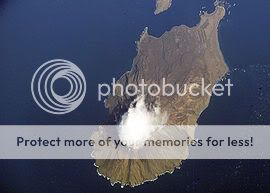
The Island also has a series of tunnels through the island from one side to the other traversed by an underground railway. Apart from the primary entrance portal there are three other entrances down vertical shafts, one 258 metres deep, the next 446m deep and the last 829m deep into the heart of a volcano on the island. Amongst the Soviets who took over the airfield during the Cold War, there were persistent rumours of a sealed underground laboratory.
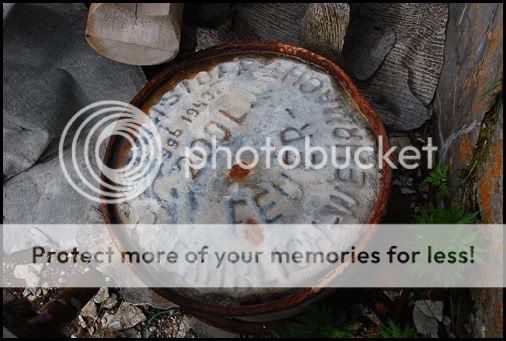
Most astonishing however is on the surface where geothermal steam was piped under the airfield by the Japanese to keep it snow free, there can still be found today many 200 Litre (44 Gallon) drums declaring manufacture in wartime Nazi Germany; 1943...
How did they get there?
Why did they get there?
Was this airfield part of a regular wartime air link from German held Petsamo in northern Finland to Japan which a captured German airman revealed under interrogation tio the British in April 1944?
:?)
edit on 4-5-2012 by sy.gunson because: grammar
reply to post by sy.gunson
the oil was probably given to the Japanese from Germany. They had no oil and that's why they wanted the islands surrounding their empire.
wiki.answers.com...'s_oil_supply_cut_off_in_World_War_2_and_why_was_this_such_a_threat_to_them
the oil was probably given to the Japanese from Germany. They had no oil and that's why they wanted the islands surrounding their empire.
Watched a program today (May 3) about Japan and it's occupation of China/Manchuria. Needing resources such as oil, Japan readied for an invasion of Russia (from occupied sites in Manchuria). Russia discovered the plan and virtually annihilated the unsuspecting Japanese forces, as well as 500 Japanese planes. Also at this time Hitler was attemping to align (or maybe Germany already was..sorry do not remember this...) or take over parts of mid-east, specifically oil rich Iraq, and Iran. Hitler and the Japanese had eventually hoped to meet up in India, sealing their alliance.
wiki.answers.com...'s_oil_supply_cut_off_in_World_War_2_and_why_was_this_such_a_threat_to_them
Germany had plenty of problems of it's own with fuel supplies. It was blockaded in the Atlantic ocean. Japan had it's own sources for oil from
Sumatra and Brunei and supply ships of it's own supplying the Kuril islands.
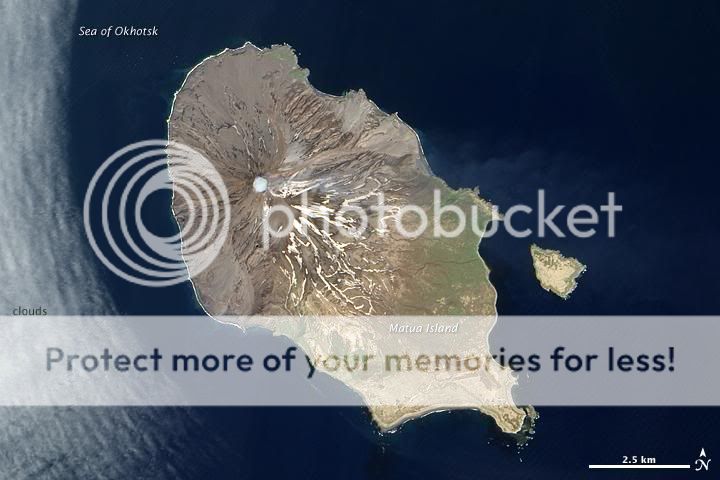
If you read anything in depth about the relationship between Germany and Japan, each country paid the other for exchanges of good and these exchanges were recorded and were the subject of diplomatic signals which were read by the Allies. A German fuel dump would not be established on a Pacific Island without good reason. Indeed it would logically only be established there for German aircraft.
For years critics have denied a German air link to Japan and have said show us the proof. Now I provide some proof and the critics say ... Oh there must be some other reason.
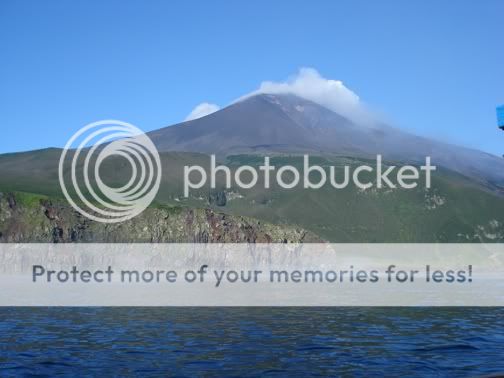
Matua (Matsuwa) island had a rocky coast with an elevated terrace. These German drums did not just end up there by chance.

That might be a valid explanation for a German fuel drum in Yokohama where the odd German Merchant raider sheltered earlier in the war, but this was 1943 when most German Merchant Raiders had already departed the Pacific. Remember these drums were manufactured 1943.

In addition, a captured German POW revealed under British interrogation in April 1944 that during 1943 the ultra long range Messerschmitt Me-264 flew special communications flights to Japan from Petsamo in Northern Finland. Well here is a logical destination for such flights. It's runway was intentionally plumbed with geothermal steam to keep the runway snow free year round. Russian sources mention two runways one 1570m x 35m and the other 2000 metres. The Me-264 was known to require a very long runway and these runways were well beyond the needs of Japanese aircraft using the airfield.
From late 1943 onwards Matua was bombed incessantly by the American 11th Air force in Alaska using B-25 Mitchells, B-24 Liberators and even on occasion B-17 bombers. By mid 1944 it was the subject of very intensive daily armed photo reconnaissance by flights of three B-24s escorted by P-38 lightnings. Why daily reconnaissance?
What was so important there?
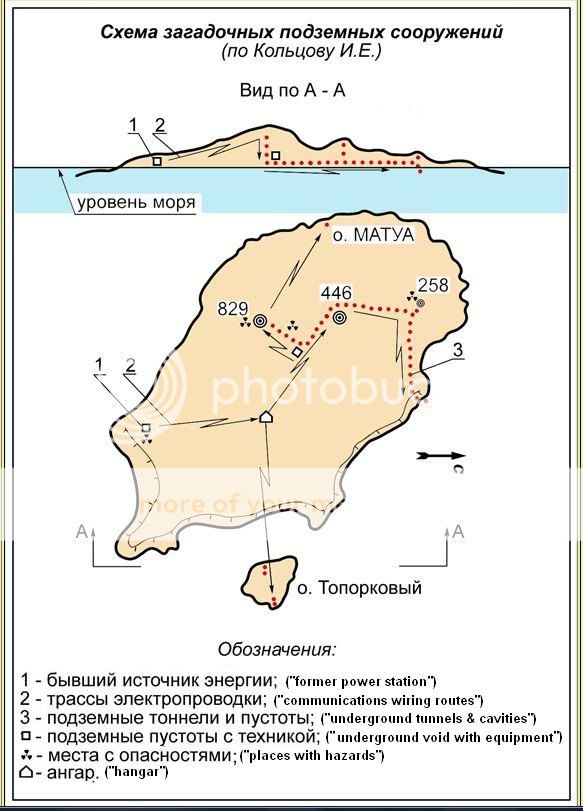
When the Soviets took it over they discovered a labyrinth of deep tunnels and cavities all across this 11 kilometre long island.


If you read anything in depth about the relationship between Germany and Japan, each country paid the other for exchanges of good and these exchanges were recorded and were the subject of diplomatic signals which were read by the Allies. A German fuel dump would not be established on a Pacific Island without good reason. Indeed it would logically only be established there for German aircraft.
For years critics have denied a German air link to Japan and have said show us the proof. Now I provide some proof and the critics say ... Oh there must be some other reason.

Matua (Matsuwa) island had a rocky coast with an elevated terrace. These German drums did not just end up there by chance.

That might be a valid explanation for a German fuel drum in Yokohama where the odd German Merchant raider sheltered earlier in the war, but this was 1943 when most German Merchant Raiders had already departed the Pacific. Remember these drums were manufactured 1943.

In addition, a captured German POW revealed under British interrogation in April 1944 that during 1943 the ultra long range Messerschmitt Me-264 flew special communications flights to Japan from Petsamo in Northern Finland. Well here is a logical destination for such flights. It's runway was intentionally plumbed with geothermal steam to keep the runway snow free year round. Russian sources mention two runways one 1570m x 35m and the other 2000 metres. The Me-264 was known to require a very long runway and these runways were well beyond the needs of Japanese aircraft using the airfield.
From late 1943 onwards Matua was bombed incessantly by the American 11th Air force in Alaska using B-25 Mitchells, B-24 Liberators and even on occasion B-17 bombers. By mid 1944 it was the subject of very intensive daily armed photo reconnaissance by flights of three B-24s escorted by P-38 lightnings. Why daily reconnaissance?
What was so important there?

When the Soviets took it over they discovered a labyrinth of deep tunnels and cavities all across this 11 kilometre long island.

reply to post by sy.gunson
If you see no airstrip then there is no mystery.
If you believe in FOO you have fast transit around the world.
The FOO are in a photo over the China Sea I think with Japanese aircraft.
With German Japan co operation there was nothing for the Japan plots to
fear from the FOO and perhaps assigned to take photographs that day.
If you see no airstrip then there is no mystery.
If you believe in FOO you have fast transit around the world.
The FOO are in a photo over the China Sea I think with Japanese aircraft.
With German Japan co operation there was nothing for the Japan plots to
fear from the FOO and perhaps assigned to take photographs that day.
BIHOTZ
reply to post by sy.gunson
the oil was probably given to the Japanese from Germany. They had no oil and that's why they wanted the islands surrounding their empire.
Watched a program today (May 3) about Japan and it's occupation of China/Manchuria. Needing resources such as oil, Japan readied for an invasion of Russia (from occupied sites in Manchuria). Russia discovered the plan and virtually annihilated the unsuspecting Japanese forces, as well as 500 Japanese planes. Also at this time Hitler was attemping to align (or maybe Germany already was..sorry do not remember this...) or take over parts of mid-east, specifically oil rich Iraq, and Iran. Hitler and the Japanese had eventually hoped to meet up in India, sealing their alliance.
wiki.answers.com...'s_oil_supply_cut_off_in_World_War_2_and_why_was_this_such_a_threat_to_them
No Germany had significant oil fields in Romania and Hungary plus several indigenous oil fields within Germany itself. The major blow to oil production in Germany did not come until May 1944 from Allied bombing.
Japan did not lack oil production. It controlled major oil fields at Brunei and Palembang.
Japan's problem came from the interception of shipping between her oil fields and Japan's home islands.
The voyages of surface blockade runners like Pietro Orselo and Analise Esseberger etc are well documented. These vessels only plied as far as Yokohama, not Matua Island. The era of surface blockade runners ended by late 1943 with only three failed attempts by ships stuck in Japanese waters after that to return home in 1944.
Blockade Runners
In addition to the above USSBS interrogations of Commander MIURA, Kintaro disclosed that most Japanese shipping in the Kuriles was falling prey to US submarines in 1944 therefore your theory is hardly credible and there is no historical account to explain how they arrived there. What is known is that there was a submarine pen hewn from a sea cliff on Matua Island and there are claims from Soviet commentators that U-534 made at least one voyage to Japanese territory through the Arctic seas. U-boats however did not carry fuel drum cargoes.
There is a similar fuel dump of Nazi fuel drums found in the Lena River Delta in the Laptev sea. During the Soviet era the mumified body of a Kreigsmarine NCO was discovered close to this fuel dump.
At least one German Commerce raider whose name I cannot recall voyaged to Japan through the Arctic however I do not recall her name, nor do I think the dates match with 1943 fuel drums
reply to post by Swing80s
I have learned that the airstrips on Matua belonged to the Imperial Japanese Navy, not the IJA air force.
Also recently I saw a photo of a 200w condenser from Matua island built 1939 in Silesia and inscribed in Polish.
Conventional historians simply ignore these inconvenient inconsistencies with their historical records hoping the truth will go away.
I have learned that the airstrips on Matua belonged to the Imperial Japanese Navy, not the IJA air force.
Also recently I saw a photo of a 200w condenser from Matua island built 1939 in Silesia and inscribed in Polish.
Conventional historians simply ignore these inconvenient inconsistencies with their historical records hoping the truth will go away.
Komet was the German raider which reached Japan via the Arctic seas early in WW2.
I located the following document Blockade Runner Summary (May 15, 1943) Record Group 313, Commander of Battleships & Cruisers, Pacific Fleet, Blue 361, National Archives & Records Administration, College Park Maryland USA.
In that document it notes:
Reference to brought in refers to homebound to Europe. Tankers sent to Asia were used to resupply German vessels and submarines as except at ports like Singapore ("Shonan") and Batavia ("Jakarta") German vessels in the Far east had to be self reliant. Fuel returned to Europe in drums are understood to be prize cargoes captured on the high seas in Allied merchantment.
Delivery of 1943 manufactured Wehrmacht fuel drums could have only occurred early in 1943 to Yokohama or Kobe. From there a vessel most likely under German control would heve been required to make delivery to Matua Island.
Surface blockade runners in the Far East in May 1943 included:
RIO GRANDE
TEISEN MARU (as URSULA RICKMERS)
HAVELLAND
RAMB II (Italian Merchant cruiser)
PERSEE (PIERRE LD)
WESSERLAND (ERMLAND)
BELGRANO
EUGENIE LIVANOS (GR)
BURGENLAND
The merchant raider Michael was under refit in Japan from March-May 1943 and might have made such a delivery from Japan.
The overriding question remains why Matua Island had such high priority in 1943 for delivery of German fuel drums?
I located the following document Blockade Runner Summary (May 15, 1943) Record Group 313, Commander of Battleships & Cruisers, Pacific Fleet, Blue 361, National Archives & Records Administration, College Park Maryland USA.
In that document it notes:
NOTE: Of the above 40 runs, 3 were made by outbound tankers. The only homebound tanker was intercepted and sunk. Several merchant ships, however, have brought in fluid cargo in drums and specially-constructed tanks.
Reference to brought in refers to homebound to Europe. Tankers sent to Asia were used to resupply German vessels and submarines as except at ports like Singapore ("Shonan") and Batavia ("Jakarta") German vessels in the Far east had to be self reliant. Fuel returned to Europe in drums are understood to be prize cargoes captured on the high seas in Allied merchantment.
Delivery of 1943 manufactured Wehrmacht fuel drums could have only occurred early in 1943 to Yokohama or Kobe. From there a vessel most likely under German control would heve been required to make delivery to Matua Island.
Surface blockade runners in the Far East in May 1943 included:
RIO GRANDE
TEISEN MARU (as URSULA RICKMERS)
HAVELLAND
RAMB II (Italian Merchant cruiser)
PERSEE (PIERRE LD)
WESSERLAND (ERMLAND)
BELGRANO
EUGENIE LIVANOS (GR)
BURGENLAND
The merchant raider Michael was under refit in Japan from March-May 1943 and might have made such a delivery from Japan.
The overriding question remains why Matua Island had such high priority in 1943 for delivery of German fuel drums?
Is it possible that the Soviets themselves left these there, the amount of captured supplies like fuel drums could have been reused by the Soviets.
originally posted by: TeslaandLyne
reply to post by sy.gunson
If you see no airstrip then there is no mystery.
If you believe in FOO you have fast transit around the world.
The FOO are in a photo over the China Sea I think with Japanese aircraft.
With German Japan co operation there was nothing for the Japan plots to
fear from the FOO and perhaps assigned to take photographs that day.
None so blind as those who REFUSE to see.
FOO is one "L" short of FOOL
You say there were no runways on Matua Island?
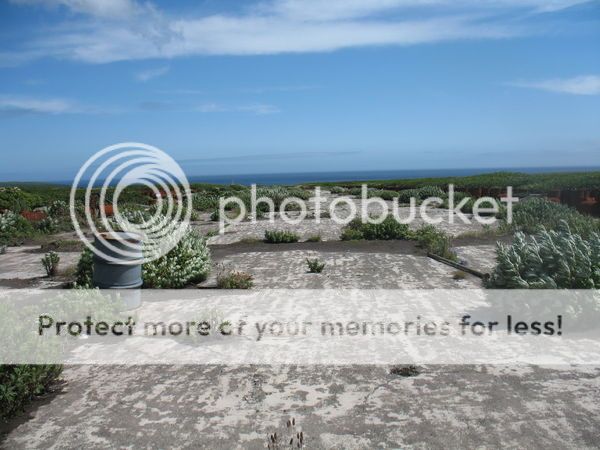
Thus one is aligned 325/145 degree with a significant downhill slope. It has hot geothermal water ducted under it to keep it free of snow all year around however the ducting has become clogged since WW2 and no longer works. The runway was lit in WW2 for night operations. You can see one of the German fuel drums abandoned on the runway itself.

Here is the other runway aligned 260/80 degrees:
I will allow others to decide how credible you are
edit on 22-6-2014 by sy.gunson because: (no reason given)
originally posted by: Matilda4
Is it possible that the Soviets themselves left these there, the amount of captured supplies like fuel drums could have been reused by the Soviets.
Given that there are no caches of German fuel drums on more easily accessible Kurile Islands, nor on Sakhalin where the Soviets established or took over a number of air bases it seems highly implausible. There would have to be strong evidence to back your theory.
Also if the Soviets brought German fuel drums all the way across Russia just to deposit it on one tiny island then why are they all 1943 manufactured drums?
Why not a mixture of drums from 1942-1945?
Germany was so short of fuel after October 1944 when the USAAF bombed the Leuna refinery how would 1943 manufactured drums survive to reach Matua island?
If they were part of German fuel dumps captured in 1943 on the eastern front then why were they not used immediately by Soviet forces?
When the Soviet Union had its own highly efficient oil industry in Baku and Astrakhan why even bother shipping German drums east?
Germany ran supplies to Japan though the entire war. They sent not only resources but also plans for planes etc. They also sent entire planes,
airframes etc. In 1944 they even sent twelve dismantled V-2 missles. In 1944 they even send the airframe of a ME163 Komet, a jet engine to help the
Japanese with the their own like the like the Blossom. So what I am wondering is what exactly is the problem with German oil drums from 43 or a long
runway. None of that seems odd or out of place.
You need to keep in mind that when the Germans delivered supplies to Japan, it was almost entirely done by submarine. And these supply trips normally
took anywhere from 6 - 9 months to arrive.
Surviving records show that there were an estimate of around 20,000 Japanese soldiers stationed on Matua Island. Mainly composed of the 41st Independent Mixed Regiment and 6th Independent Tank Company, along with several support units.
The island was used as a staging area. Normally, they had several cargo or transport ships anchored in the harbor area on the southeast side of the island. And the forces were split between the main island and the small island to the East.
In June, 1944 the USS Herring, a Gato Class Submarine, sank two cargo ships anchored at the island. The Hiburi Maru and Iwaki Maru. She also sank an Japanese Army cargo ship departing the island and an accompanying escort vessel. The Hokuyo Maru and the Ishigaki.
The Herring was then sunk by a coastal defense battery from Matua Island.
Then in August of 1945, the Soviet Union invaded the island.
So what this means is we know that the Japanese were actively using the island until 1945 to move supplies. And we know that barrels of oil produced in 1943, most likely didn't arrive in Japan until 1944.
So keeping the runways clear of snow would have been ideal purely from a logistical standpoint.
Surviving records show that there were an estimate of around 20,000 Japanese soldiers stationed on Matua Island. Mainly composed of the 41st Independent Mixed Regiment and 6th Independent Tank Company, along with several support units.
The island was used as a staging area. Normally, they had several cargo or transport ships anchored in the harbor area on the southeast side of the island. And the forces were split between the main island and the small island to the East.
In June, 1944 the USS Herring, a Gato Class Submarine, sank two cargo ships anchored at the island. The Hiburi Maru and Iwaki Maru. She also sank an Japanese Army cargo ship departing the island and an accompanying escort vessel. The Hokuyo Maru and the Ishigaki.
The Herring was then sunk by a coastal defense battery from Matua Island.
Then in August of 1945, the Soviet Union invaded the island.
So what this means is we know that the Japanese were actively using the island until 1945 to move supplies. And we know that barrels of oil produced in 1943, most likely didn't arrive in Japan until 1944.
So keeping the runways clear of snow would have been ideal purely from a logistical standpoint.
new topics
-
VP's Secret Service agent brawls with other agents at Andrews
Mainstream News: 28 minutes ago -
Sunak spinning the sickness figures
Other Current Events: 1 hours ago -
Nearly 70% Of Americans Want Talks To End War In Ukraine
Political Issues: 1 hours ago -
Late Night with the Devil - a really good unusual modern horror film.
Movies: 3 hours ago -
Cats Used as Live Bait to Train Ferocious Pitbulls in Illegal NYC Dogfighting
Social Issues and Civil Unrest: 4 hours ago -
The Good News According to Jesus - Episode 1
Religion, Faith, And Theology: 6 hours ago -
HORRIBLE !! Russian Soldier Drinking Own Urine To Survive In Battle
World War Three: 8 hours ago -
Bobiverse
Fantasy & Science Fiction: 11 hours ago -
Florida man's trip overseas ends in shock over $143,000 T-Mobile phone bill
Social Issues and Civil Unrest: 11 hours ago
top topics
-
Florida man's trip overseas ends in shock over $143,000 T-Mobile phone bill
Social Issues and Civil Unrest: 11 hours ago, 8 flags -
SETI chief says US has no evidence for alien technology. 'And we never have'
Aliens and UFOs: 15 hours ago, 7 flags -
Cats Used as Live Bait to Train Ferocious Pitbulls in Illegal NYC Dogfighting
Social Issues and Civil Unrest: 4 hours ago, 7 flags -
Former Labour minister Frank Field dies aged 81
People: 13 hours ago, 4 flags -
Bobiverse
Fantasy & Science Fiction: 11 hours ago, 3 flags -
HORRIBLE !! Russian Soldier Drinking Own Urine To Survive In Battle
World War Three: 8 hours ago, 2 flags -
Nearly 70% Of Americans Want Talks To End War In Ukraine
Political Issues: 1 hours ago, 2 flags -
Late Night with the Devil - a really good unusual modern horror film.
Movies: 3 hours ago, 2 flags -
VP's Secret Service agent brawls with other agents at Andrews
Mainstream News: 28 minutes ago, 1 flags -
Sunak spinning the sickness figures
Other Current Events: 1 hours ago, 0 flags
active topics
-
SETI chief says US has no evidence for alien technology. 'And we never have'
Aliens and UFOs • 38 • : SchrodingersRat -
VP's Secret Service agent brawls with other agents at Andrews
Mainstream News • 10 • : theatreboy -
15 Unhealthiest Sodas On The Market
Health & Wellness • 42 • : ThatSmellsStrange -
Breaking Baltimore, ship brings down bridge, mass casualties
Other Current Events • 483 • : KrustyKrab -
President BIDEN Vows to Make Americans Pay More Federal Taxes in 2025 - Political Suicide.
2024 Elections • 120 • : ImagoDei -
Truth Social goes public, be careful not to lose your money
Mainstream News • 126 • : Zanti Misfit -
Nearly 70% Of Americans Want Talks To End War In Ukraine
Political Issues • 6 • : budzprime69 -
HORRIBLE !! Russian Soldier Drinking Own Urine To Survive In Battle
World War Three • 25 • : Freeborn -
Definitive 9.11 Pentagon EVIDENCE.
9/11 Conspiracies • 422 • : Zanti Misfit -
How ageing is" immune deficiency"
Medical Issues & Conspiracies • 30 • : annonentity
7



